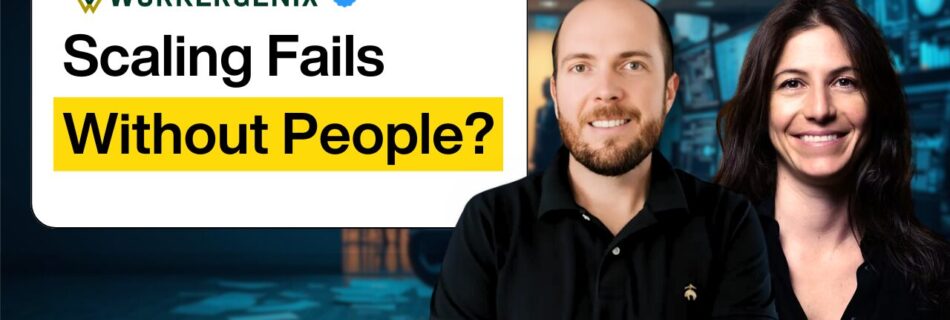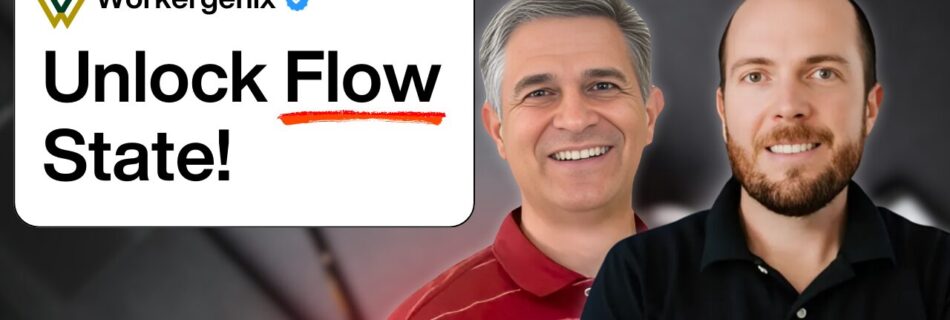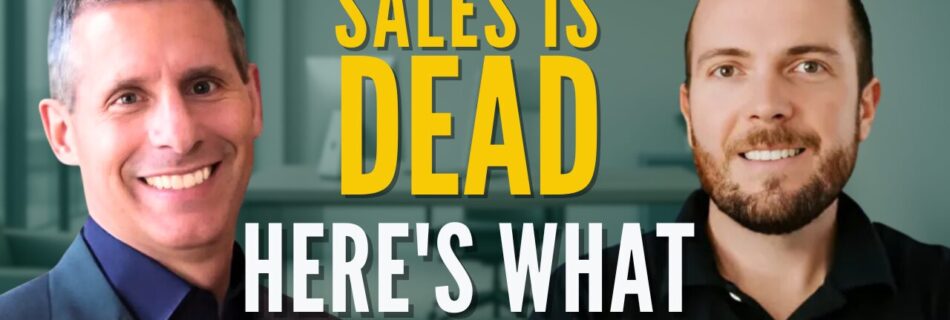Why Your Team is the Key to Scaling — Not Your Tech
When we think about scaling a business, most of us instinctively reach for tools—new systems, faster software, smarter automation. But what if the real bottleneck isn’t your tech… it’s your team?
Preferred listening on the go? Catch the full podcast episode on Spotify and Apple Podcasts.
In a powerful conversation on the Scale Smart Grow Fast podcast, international speaker and human behavior strategist Carly Pepin shared a wake-up call for growth-stage leaders:
“Your company can only scale as fast as your people are aligned to it.”
🚨 The Problem: Systems Are Outpacing People
Carly sees it all the time—startups and scaling companies with optimized systems but disjointed teams. What’s the result?
- Internal miscommunication
- Burnout at every level
- High-performing people checking out or walking out
The biggest red flag? When your employees are clocking in and out with zero enthusiasm—and you’re constantly frustrated with the pace or quality of execution.
🔑 The Solution: People First, Systems Second
Tech doesn’t run your business—your people do. Carly explains that true scale happens when leaders focus on:
- Getting the right people in the right seats
- Linking roles to individual values
- Training and developing people, not just tech stacks
Even with limited resources, there are countless ways to elevate your team. Whether it’s leveraging low-cost platforms like Lynda.com or bringing in guest speakers, continuous education fuels engagement.
🧠 Use Behavior Insights to Drive Performance
Tools like DISC assessments and Carly’s Values Determination process help leaders understand not just how people work—but why.
When employees see how their daily tasks connect to what matters most to them, their engagement shifts dramatically. Carly’s team workshops even help people see how something as mundane as data entry contributes to personal goals like health or travel.
⏰ When to Start Delegating? Sooner Than You Think
Burnout doesn’t mean your business is broken—it means you’re doing too much. Carly advises leaders to:
- Track your time vs. value
- Stop doing $15/hour tasks if your time is worth $500/hour
- Delegate before burnout costs you momentum—or your top performers
🎯 Leadership Isn’t Just Strategy — It’s Psychology
At the core of Carly’s message is this:
“People aren’t lazy—they’re uninspired.”
If your best people are disengaged, misaligned, or overwhelmed, no system or strategy will compensate. The real growth starts when leaders build a culture where people can thrive—not just survive.
🎁 Free Resources from Carly Pepin:
Unlock her Values Determination tool and team alignment assessment at:
👉 westcoastgrowthadvisors.com/podcast-gift
✅ Let’s Build the Team That Can Scale With You
At Workergenix, we help growth-focused founders and leaders align their people with their mission — so scaling doesn’t come at the cost of burnout or bottlenecks.
👉 Schedule your FREE discovery call to see how we can help you unlock the full potential of your team.
Like what you read? Get weekly insights on scaling, efficiency, and profitability—straight to your inbox. Click here to subscribe.Transcript
Harley Green:
Hey everybody. Welcome back to the Scale Smart Grow Fast podcast. You know, when systems outpace the people behind them, growth breaks down. In this episode, Carly Pepin, international speaker and consultant shares why sustainable scale begins with your team, not just your tech. Drawing from deep expertise in human behavior and strategic growth, Carly is going to reveal how leaders can align mindset, roles, and execution to build high performing teams that thrive under pressure and drive real results. Carly, welcome to the podcast. How are you today?
Carly Pepin:
I’m good. Thank you for having me, Harley.
Harley Green:
It’s our pleasure. Carly, maybe you can share a little background story of like what brought you to what you’re doing today and helping businesses in this area.
Carly Pepin:
Yeah, so I grew up in a family of entrepreneurs. So I’ve been around entrepreneurship for quite some time. And it’s been something where you have the option to, you know, I had the option. I didn’t love school. I would actually ditch school and go to work where I got to manage a surf shop and they taught me a lot of stuff. So my parents at a certain point said, well, maybe we help you start your first business as opposed to going to college because you seem to really enjoy this. So that was my college education instead, and I really enjoyed it. It didn’t work out, business is business, but it was really quite an inspiring experience. After that, I just had the opportunity to work in these other small businesses where I would help them to scale and grow. And I just remember at a certain point, I was like, why am I not doing this for myself? I just keep doing this for other people. Why am I not doing this for myself? And that’s when I decided to really get into it and go into more of the coaching and consulting version.
Harley Green:
Awesome. Now, one thing you’ve mentioned is when systems scale faster than people, that businesses stall. What does that look like in real life and why is it such a common problem?
Carly Pepin:
Yeah, so basically what’ll wind up happening is when our business is scaling at an exponential rate, but we’re not actually, our people aren’t prepared for it, then they don’t actually know how to step into it. They don’t know what to do. And we see it on the backend of these companies that are the startups, right? These crazy startups that are like, we got to do this. We got to make this money really fast. I’ve got to work with a lot of executive teams in those. They’re going crazy on the backend. They’re trying to keep up. The communication on the back end isn’t actually functioning, working. Everyone’s not quite sure where they’re going and what they’re doing. Because usually that main focus is actually just creating the finances, but there’s no real other goal that’s tangible and everyone else is connected to. And so it’s really interesting. It’s not that you can’t scale quickly, but if you’re not scaling quickly while putting the systems in place to make sure the people are connected to what’s going on, they’re very confused and it just becomes a mess on the back end of people trying to figure out what’s going on, where they’re going, are they actually doing the right thing, like are they achieving the right thing, and they often just show up and get the job done. So it becomes a bit chaotic.
Harley Green:
What are some of the typical indicators that someone is in that situation that they might keep an eye out for and realize, hey, it doesn’t actually have to be this way?
Carly Pepin:
Yeah, you’re also going to be frustrated with your employees because they’re not getting things done the way that you would love to get them done. Maybe things are stalling. Maybe things are kind of getting stuck in a bottleneck that you haven’t even quite seen where the bottleneck is yet. But your employees are also going to be frustrated. You’ll have complaints. You’ll have them not wanting to be around, clocking in and clocking out at the exact same time every day, trying to get as many breaks in as possible. I mean, you’re going to see them disengage because their job sucks right now, basically. It is what it is. Technically, they constantly are saying they want good employees and good employees, but you get good employees when you create a great environment for them to be in, and then you have people who are inspired to be there. So really pay attention to your people. If they’re not engaged and they’re not actually enthusiastic to be there every day, something’s going on within your company, and it’s really important to check out what’s happening and what’s going on and see how things are actually moving forward. Is everyone truly aligned? Does every department know how to communicate with each other, connect with each other? Do they know how to incorporate and integrate with each other? Is that something that you’re even working towards? Otherwise, again, it’s very, very, very difficult. Things can be challenging.
Harley Green:
I love that having inspired employees when you create that right environment. Now, a lot of times people when they’re getting started, they often are looking more at like their tech stack and maybe the systems rather than investing in their people. Why would you say leaders often are going down this path and not as focused on people?
Carly Pepin:
We forget that the people run the tech, genuinely. That’s it. People are going to run the tech. So you want great people and you want to be able to train them. I mean, we see this coming forward with AI to such a great degree. AI is still going to be run by people. The people are going to manage AI. So if you’re wanting to incorporate AI into your systems, it’s also helping to get the training for your people to make sure that they’re running it like to the best degree possible. AI only works as good as its end user and we are the end user. And so we forget that sometimes, like technology is quite powerful and it’s very important, but if you’re not empowering your team to use the technology, the technology becomes worthless. So that’s a really important dynamic. And remembering just to focus on both. You focus on both. Most of the clients that I have, they have educational departments, one of them is really fun. Just, actually starting like their own university within the company because education is such a big deal to them and they’re going to give credits and all these extra bonuses and stuff for their employees who go and take the extra time to do some of these courses and studies and read books. It’s very cool and it’s a very powered group. People really want to work there. They love working there. It’s great. So it’s that dynamic too. It’s like your technology, your company, every system that you have is only as powerful as the people in it. And so it’s like, what are you doing to actually make sure that your people are also staying ahead of the curve, not just your company.
Harley Green:
Yeah. For those listening that maybe feel like they don’t have the resources, whether it’s time or finances to like set up that kind of internal university to help educate their employees. What are some other options that they could consider to help keep their employees trained, educated and inspired?
Carly Pepin:
Yeah, absolutely. Ask your employees too what they’re interested in. I’m going to give you an example of a larger company, but we’ll do some smaller examples too. But I remember one of our clients, he worked at a big telecommunications company and he loves personal development. And so he just started communicating with the executive team in the company and wound up building an entire personal development unit. And he puts on workshops and he puts on events and stuff within the company, right? So it’s available if you ask. Then there’s the other dynamic. If you’re a smaller company, it’s like, well, how do I do that? You can still bring in guest speakers. You might not get the best of the best and the craziest speaker out there, but you can still get local speakers who are quite intelligent and quite informed and bring people in at a significantly lower cost to your employees. You can have them do smaller workshops. Again, there’s lower cost ones, there’s higher cost ones. And then there’s also the dynamic of online learning. There are so many different options. I’m pretty sure lynda.com is highly affordable. I haven’t used it in quite some time, but I remember back in the day, I had one employee who would give us basically like training through that program. And it was really helpful because he just wanted us to excel and then we would utilize that system to be able to excel. When I went to another company, I was like, hey, let’s use this. And she brought it into our system as well. And the employees really appreciated having the extra education, just having access to something like that. And there’s larger courses too you can take. The Harvard Business School Online, they have stuff. There’s a ton of online universities now that are doing a lot of different business courses and classes. So when we think about it, the possibilities are endless. Even the DISC, DISC is pretty cool too, because I’m a DISC facilitator. But a lot of the individuals who are in the DISC facilitation were actually part of companies that just wanted the person who was really inspired by it within the company to lead instead of bringing someone on the outside. So there’s so many different options of how we can educate our people at so many different price levels. And sometimes it’s you, by the way. One of my clients loves teaching. Obsessed. So he is the teacher. He learns it and then he actually does mini workshops with his teams that are usually about three hours and his team loves it and they’ll dive in and they actually stay late and it’s really funny because they love it so much that sometimes it goes way beyond the normal time and he’s like I could keep going. Are you guys okay? Because it’s getting really late and they’re like, yeah. Keep going. And it’s like, okay. That’s how much they enjoy it. So there’s also that option too. If you love teaching, like you could be the one to do it.
Harley Green:
Absolutely. Well, Carly, you mentioned DISC. Can you maybe explain what that is to our audience that maybe hasn’t heard of that before?
Carly Pepin:
Yeah, DISC is a personality assessment profile. I really enjoy it. I like it because there’s a lot of personality assessment profiles, but I do not believe in boxing ourselves up into one box. So the thing that I love about DISC is I’ll focus on individuals utilizing it specifically for their workplace environment to see how you show up in the workplace so that you can figure out how to integrate yourself with other people, how to communicate better, how to go through conflict better. It’s really actually important in businesses to be able to be conflictual. That’s one of the things that I do a lot of training on because if you’re just showing up every day and being a yes person, a lot of stuff is going to fall through the cracks, and your executive team is going to appreciate the no person to a greater degree. But being able to understand how to communicate to people because everyone has these different personality types is really helpful. But like I said, I love it because in a sense where we do have these specific personality types that we show up as, that’s not always who we are. We technically are every part of that system, like we display everything and we just might have something more prominent at work than we have at home. So I like that it’s very clear on that human behavior side. So it’s been one of the tools that I’ve been able to utilize to help individuals, employees, leadership teams kind of come together in the workplace to a greater degree and understand each other. I’ve really enjoyed it.
Harley Green:
So speaking of human behavior, what are some additional ways that understanding the human behavior can help the leadership team scale more sustainably?
Carly Pepin:
Yeah, so when you understand who people are, what they do, what they love, what they appreciate kind of dynamic, there’s another assessment that I do, which I actually have on my website. So this one’s the values determination. And that’s the core understanding of who you are and what you invest the most time and energy in. It’s basically like our life purpose in a sense. So it’s a questionnaire to understand that dynamic. If you have someone who loves health and fitness and then they love their family, and they love traveling and you’re upset because they’re not engaged at work, well, do they even understand how their job is helping them with that? No, they don’t. They have no idea. And so part of that too is understanding what’s important to people. If I have someone who’s really invested in travel, and then I know that they love travel, they’re obsessed with travel, and I have an opportunity within the company that they could go travel and there’s a job for that. I’m gonna put them in there. I’m gonna say, hey, what do you think about this? Is this like a job for you? And so it’s kind of understanding what’s important to people because that person who loves travel will be most engaged in the thing that they love. And it’s really quite fascinating because we think people are lazy, but people are not lazy. People are lazy when they don’t feel inspired to be doing what they’re doing. So if you don’t understand your people and you don’t know where to put them to understand what they’re actually truly great at, you have the wrong people in the wrong seats. And so you really want to work on understanding people, understanding their strengths, understanding their personality, so you can get them in the right seats. Because once you put them in the right seat, they’re the best employee on the planet and even better, they love what they’re doing. Because that’s the kicker. I’ve been at companies where you walk in and people hate their jobs and they hate what they’re doing. And I actually, I mean, I really love business and I love working. So working in those companies was hard for me because even if it was a volatile environment, I still was enjoying my job and I couldn’t get things done. There are companies that I left because I was frustrated that I couldn’t get things done. The other employees were so disengaged that they hated their jobs. I’d go and I’d be like, this is the thing, this is the goal. Why are we not working towards this? I don’t want to. I don’t want to be here, all this crap. And I would quit because of those reasons. And so you’ll have people, you’ll have an A player and they’re not going to stay. No A player will ever stay in that company because they want to reach the goal. They want to get it done. And I have multiple executives that I’ve worked with that have quit working at companies because they cannot go be high achievers in the company because other people are disengaged and not happy. So the importance of having, again, the right people and the right seats gets them inspired, which increases your cultural dynamic of having this really inspiring culture to work for. And then they become A players and you can attract more A players to come in because they’re high achievers. They want to get stuff done. And now they have a team around them that’s inspired to do so. It’s really important.
Harley Green:
But it sounds like there could be situations where a leadership team might be considering letting someone go or being very frustrated with an employee because they are not performing. They feel like, hey, they’re not an A player, but it could just be a mismatch of those values and their personality. And there’s an opportunity for them to become an A player with the right role. What are some tips or strategies the leadership team can use, once they have the values and that behavior to help align those roles with those behaviors and values?
Carly Pepin:
Yeah, and it’s to check in if someone’s really worth saving, too. There’s also some people that just don’t fit with the company. But if you’re looking at them and you’re like, we really like this person, but they’re not performing as we thought they would, it’s to check in and see why aren’t they performing. Ask them some questions. When I’m working with companies, we like to also put in KPIs to track on a regular basis, job scorecards and stuff so that you already have a lot of these answers. If you don’t have the answers, it’s actually checking in. They might have a gap within their job that they’re not understanding how to do something. It could be an educational component. It could be a technology component. It could be part of their team and that component. We don’t really know if you’re not tracking it. That’s why we suggest doing the job scorecards and we get those integrated so that you have that knowledge and information to see what the real gap is. Because if the real gap is the person and you’re like, but this person is really excelling when they’re connecting with this team, when they’re connecting with marketing, it’s like, well, why don’t we focus here and see what they can do in this department as opposed to putting them here. And then we check in with them too. You ask them the question, would this be inspiring to you? And usually it’s a yes. I just worked with someone who loved the company she worked with, loved the company she worked with, but she didn’t like the role they had given her. And they really liked having her as a teammate, but she was frustrated again, because she said, I just am not performing at the level I know I can. And I asked her, what would help you to perform that way? And she’s like, this job that they actually have available. This one’s wildly inspiring to me. I love this one. And I was like, okay. And then we sat there to position her to be able to apply for that job inside the company and negotiate her transforming from one position to another, which they genuinely let her do because at the core of it, she said, listen, I’m not doing as good of a job as I can do. I want to do better. It’s making me crazy. And when an employee comes to you and says that, you’re like, whoa, maybe we do give them the chance here. They want to do better. And so really paying attention to what’s important to them, where they’re excelling, what they’re amazing at and what they suck at in a sense. Because if we keep making them do stuff that they suck at, they’re just, they’re not going to excel. And sometimes they have extra things that they might’ve been hired for the thing that they’re inspired by, but you put on a ton of other things with them. So it’s having these check-ins and having these conversations to make sure that they’re also not overwhelmed and overburdened with things that they wouldn’t have even signed up for in the first place. It happens a lot. This is why when I’m working with companies, we put a lot of tracking dynamics in. In the beginning, companies tend to feel a bit overwhelmed because they’re like, this is so much to do. But at the end of it, once it becomes a habit and routine, like anything, it becomes a simplistic thing to put into place where you save so much time and energy later on and all these things that we’re talking about, you’re actually catching because you put the systems in to be like, hey, so-and-so has been performing quite well for quite some time, but now they’re starting to underperform. What’s the difference? We put them in charge of this project. They don’t like this project. They’ve actually been sharing they hate this project. Maybe this is not the project for them because the project’s not even doing that well. And so you can kind of track it and see what’s happening before you have to go back and do all this like crazy research and stuff. So that’s why we like to do a lot of tracking.
Harley Green:
Yeah, I love tracking KPIs. My background’s engineering, so I love looking at the numbers there. You kind of touched on this a little bit—how can leaders balance the high performance expectations of their team members while still having a psychologically safe work environment for them so people don’t have that burnout or the stress?
Carly Pepin:
Yeah, so this is also being realistic in a sense. Sometimes burnout happens because people are working too hard, too long of hours. Again, I see this a lot in startup companies, especially the ones with investors who want a certain amount of income by a certain deadline. It’s really high pressure. What ends up happening is you have people working seven days a week, 14 hours a day, and they get burnt out.
Part of this is, I get that that’s your goal, but you’re going to burn out your team and lose people regularly. There’s a lot of employee turnover in those companies. Funny enough, the solution is often: just hire more people. The cost of employee turnover is so high—look at the research, it’s comical how much it’s actually costing you. And if you look at how many employees you’re turning over because you’re overworking them, you’ll realize: we could have saved money by just hiring more people.
As the engineering brain, do your math. Sometimes just do your math because you might realize that’s the easier path. People also get burnt out for other reasons, like personal life challenges. We can’t have the unrealistic expectation that everyone’s going to be perfectly energized all the time. Some companies I work with invest in personal development for team members going through something tough, and it helps them come out stronger.
Another reason for burnout is lack of inspiration. If someone is uninspired by their role, they’re going to burn out even if the workload isn’t objectively huge. This goes back to putting people in the right seat, giving them work that energizes them. When you’re doing things you’re passionate about—even if it’s hard—you feel more energized.
That’s true for founders too. Most founders I work with get stuck in the weeds. One client just wanted to focus on the creative and the company’s future vision. So we removed everything else from her plate. Another loved sales—but only big deals. So we positioned him at the top, closing big deals, and delegated everything else. He lit up again.
Even at the executive level, if you’re not doing the things you love, you’ll burn out.
Harley Green:
Yeah, you mentioned, you know, starting to delegate things. When would you say is the right time or some signs when it is time for that executive team or even those high performers that are in the right seats to start delegating or maybe time to get them like an executive assistant to handle some of those things to keep them in those zones that is what they really love doing?
Carly Pepin:
It happens faster than people think, and it’s when the burnout comes. You’ll start to get burnt out by your business because you’re just doing too much and you’re managing too much. That’s when it’s really time to start getting people in to delegate to. It’s really important because if you get burnt out, you link it to the entire business when it’s not actually the entire business. It’s usually just a few things.
Then you’ll drop out of your entire business and slow things down. Business slows down, you’re not as engaged, and your vision gets farther and farther away. Instead, ask: What are the things that are burning me out? What do I not need to do anymore?
Sometimes what I’ll do if a client struggles to delegate is, we go through all the things they do in a day and we look at their hourly rate versus how much it would cost to actually replace that. And we realize they’re doing a minimum wage job—even though they make $500 to $1,000 an hour. We ask: If we brought someone in to handle this, and it freed you up to do high-value work, would that be worth it?
When it clicks, it’s like, why am I doing this? And I’m like, exactly. Let’s get you some help. And once they do, they get hooked—in a good way. They bring on an assistant, then an accountant, and next thing they’re like, “Why don’t we have a lawyer yet?” I had a client juggling lawsuits at a $60 million company with no legal help. I said, let’s fix that.
You start to delegate, and it frees you up to focus on the highest revenue activities. You’re not meant to be in the weeds. When burnout hits, it’s not a bad thing—it’s feedback. Ask yourself: What am I getting burnt out by? And how do I find a way to delegate that?
Harley Green:
I love that. I remember a company I used to work for many years ago, one of the co-founders would be seen in the kitchen cleaning the fridge. And it was just like, you can hire a cleaner—there are so many other amazing things you could be doing for the company.
Harley Green:
One question I had too— we talked about ownership and accountability a little bit earlier. I want to touch on that again. Do you have tips or strategies that you’ve seen work really well to foster true ownership and accountability within the team?
Carly Pepin:
Yeah, absolutely. We actually have these group workshops we’ll do. Using the values determination questionnaire I mentioned earlier, we have the whole team fill that out. Then we have them list all their job responsibilities and connect how each one aligns with their personal values.
Let’s say someone’s doing data entry but they’re passionate about health and wellness. We’ll ask: How does doing data entry help you with your love of health and wellness? We’ll ask it over and over until they find an answer. And when they make that connection, their mindset shifts. It’s like seeing a part of the world they hadn’t seen before.
When your subconscious knows that your work is connected to what’s meaningful to you, it fuels inspiration. I remember the first time I learned this, I had to build furniture at a company I worked for, and I hated it. But I made that internal connection to how it helped my bigger purpose—and I actually started to enjoy it. I had a tear of inspiration while building furniture. No joke.
So when we do this in a team environment, people start seeing their tasks differently. We even tie it to the company’s mission. When people see how their day-to-day work contributes to their personal goals and the company’s mission, they feel more aligned. It’s really cool. We usually do that quarterly or bi-yearly.
Harley Green:
Now for leaders who are feeling stuck or maybe unsure how to scale without burning out their teams, what would you say would be the first step they should take?
Carly Pepin:
Definitely making sure they have the right people in the right seats. When you’re thinking about scaling, there are times when business is chill—but there are also sprints. You can’t avoid the hustle altogether.
But if someone’s inspired by what they’re doing, they’ll lean into that hustle. I saw this a lot in the fashion industry. It’s chaotic during certain seasons, but people who love their work aren’t complaining—they just show up and do it. They might say they’re tired, but they’re not resentful.
If they’re in the wrong seat, they’re going to burn out fast and pull back. I’ve seen great people slowly disengage and eventually leave because their role didn’t align with their strengths or passions—even if they loved the company. Your people are one of your most powerful tools.
Harley Green:
Carly, thank you so much for sharing these valuable insights with our audience today. If people want to have their team be inspired and continue this conversation with you, what’s the best way for them to get in touch with you?
Carly Pepin:
Yeah, so you can head on over to my website, which is westcoastgrowthadvisors.com. We have a couple of questionnaires on there that are really helpful. One is the values determination we talked about. The other gives you insight into where your team and culture might have gaps. It’s a great starting point.
Harley Green:
Thank you so much. We’ll make sure we have all those links in the show notes. Now, if you got value from this episode, do one quick thing: hit like and subscribe so you don’t miss future strategies to help you scale smarter. And if you know a business owner or leader who could use this info, share this episode—it could be exactly what they need.
And if you’re listening on a podcast platform, leave us a quick rating. It helps us reach more leaders like you. Thanks for tuning in, and we’ll see you on the next one.










